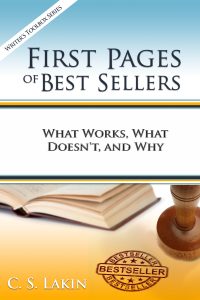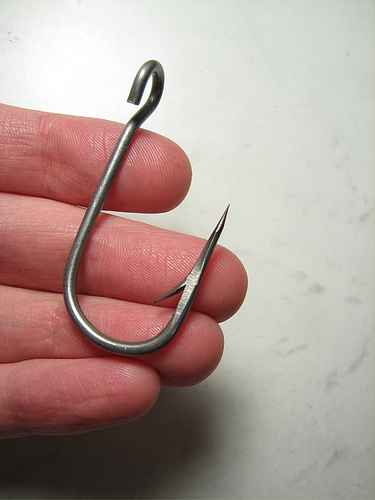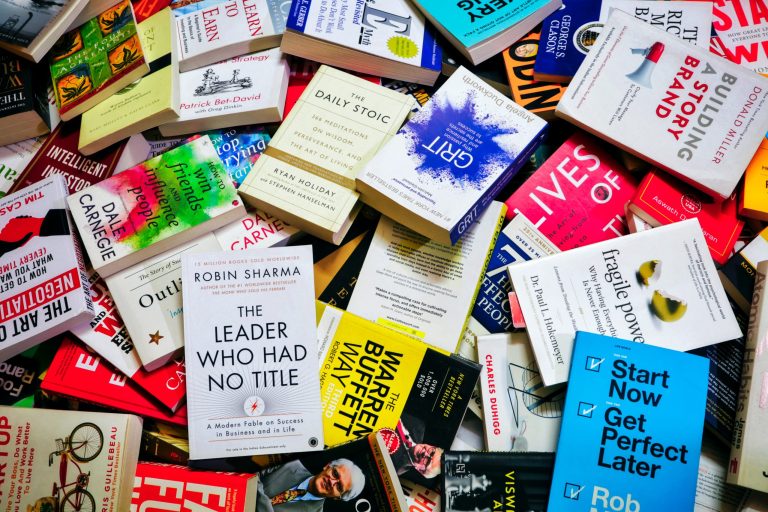The Crucial First Page of Your Novel
My latest craft book in The Writer’s Toolbox series just released. Here is a preview excerpt from First Pages of Best Sellers: What Works, What Doesn’t, and Why:
Most authors know that the first pages of a novel are the most crucial and carry the weightiest burden in their entire book. The opening scene must convey so many things that often the author will have to rewrite it numerous times to get it right.
But the first page is especially crucial to get right.
Why? Because if readers don’t get engaged in the story right away, they’ll stop reading. I’ve heard literary agents say that if the first paragraph doesn’t grab them, they move on to the next submission. That puts a tremendous burden on writers to bring their best effort to the table.
When you’re a best-selling author with a following, your fans might be forgiving enough to bear with you through some slow or less-than-masterful pages to see how your novel unfolds. And we’ll see a number of first pages by best-selling authors that appear to be carelessly thrown together, perhaps based on that confidence that their loyal readers will be lenient with their judgement.
But a creative should never do anything in a mediocre fashion, in my opinion. We should all take pride in everything we do, and for us writers that means studying our craft, becoming both masterful wordsmiths and story builders.
Many literary agents and acquisition editors complain that despite good writing overall, many manuscripts are missing something. They don’t inspire, move, or touch the heart—and yes, believe it or not, these folks do expect to have that experience, at least in part, upon reading your opening scene.
And they aren’t going to get through that first scene if they can’t get through your first page. That’s why I put together a first-page checklist and did an extensive, albeit subjective, analysis of two dozen best-seller first pages. Most of this material comes from my blog Live Write Thrive and ran in 2016, though I’ve added much more content to this book to help you nail your first page.
In these first pages analyses, I discuss potential pitfalls: excessive narration and explaining, unimportant details clogging paragraphs, lack of interesting action, POV issues, overuse of passive construction (“to be” verbs), and uninteresting or unengaging characters that lack emotion and fail to inspire empathy in readers. While these are issues that can plague an entire manuscript, they are particularly “fatal” if found on your novel’s first page.
But you’ll also see beautiful examples of what works and why. How writers so quickly evoke emotion in readers—yes, on the first page—and set up microtension and intrigue so that readers can’t help but want to know what comes after that riveting first page.
Be sure to download my first-page checklist at my Resource page at Live Write Thrive and look it over (and print it out!). This is what I use to “measure” these first pages in this book. Though not all these elements will be presented on your first page, the more the better (so long as they’re done well and it’s appropriate to your genre and plot). Here it is for handy reference.
The First Page Is Indicative of the Rest
Noah Lukeman, in his book The First Five Pages (published in 2000), says “… over the years I’ve read thousands of manuscripts, all, unbelievably, with the exact same type of mistakes. … Writers are doing the exact same things wrong.” I’ve found this to be spot-on in the hundreds (perhaps thousands) of manuscripts I’ve edited and critiqued too. He goes on to explain that the opening pages are indicative of the rest of a manuscript. Meaning, the weak writing or glaring errors or “bad” writing habits noticed on the first few pages almost always implies the rest of the manuscript will be more of the same.
For that reason, it doesn’t help to have a writer say something like “Wait till you get further in, when the story gets rolling. Then you’ll see how good it is.” No, we’ll probably know “how good it is” by seeing how good that first page is.
My new book examines what makes these first pages grab readers and pull them into the novel. I use this first-page checklist to break down the key elements of these effective first pages. Keep in mind, most of what you’ll learn can apply to short stories as well as memoirs and other types of creative nonfiction.
It’s all about telling a story in a way that engages your reader’s brain. To make a brain go into alert mode, some mystery or element of danger, or the incongruous, must cross its path.
It Takes Work
Great scenes seem to flow effortlessly from the pages of novels, but that’s far from the truth. To craft a terrific scene, a writer must keep in mind a myriad of principles and objectives.
First pages need to be tight, with concise description, and jump right into dynamic action and hint of conflict. Every word counts, so excess verbiage and unimportant movement and speech must be eliminated.
Readers want to see the scene played out, not be told about it with lengthy narrative and explanation. They don’t want ordinary and predictable. They want their curiosity aroused and their hearts tugged as quickly as possible. They want to latch on to a character who intrigues them and who’s facing challenging circumstances.
Writers are encouraged to open scenes in medias res. That means your character is dropped into the middle of something that’s been developing before the scene starts. It takes careful thought to come up with a strong opening moment in which to showcase your character. That scenario you put her in needs to covey her personality, core need, and immediate goal/objective and problem, as well as establish setting, hint at a bigger conflict (if possible and/or useful to the premise), and perhaps show and describe other characters in the scene.
All that on the first page? It’s a tall order, but great writers can fill it. You’ll note that not every item on the checklist will show up on page one, but great novels will start off with most of them.
Regardless of genre, all novels need to come out the gate with a bang, for readers open to a first page with a sense of anticipation, hoping the author will deliver on the promise of an exciting beginning.
Don’t Expect Readers to Stick Around
Sadly, way too many novels begin slowly, with excessive narrative, summary, backstory, and explanation. While this was a common practice and acceptable decades ago, readers today want to be immediately immersed in the present action. The challenge for novelists is to find ways to bring to life a scene rich with sensory detail and introduce a compelling character (usually the protagonist) that readers will be intrigued by all on the first page.
Remember: you might have the patience to read two or three or ten pages of a novel before it “really gets underway,” but, unfortunately, a lot of people don’t. A whole lot of readers (sorry, including me) will opt to stop reading if the first page doesn’t engage them. Maybe they’ll give a favorite author the benefit of the doubt and read more pages than usual if they’re struggling through a sluggish opening. I’ve even read an entire novel on occasion that I didn’t particularly like just because of my “loyalty” to an author.
I don’t feel like doing that anymore though. My time is too precious to be wasted on reading boring novels.
 Whether you’ve never written a novel or you’ve written twenty, that first scene can be tough to write. It’s the start of a ginormous journey, and you can feel a wave of exhaustion and terror at the task before you.
Whether you’ve never written a novel or you’ve written twenty, that first scene can be tough to write. It’s the start of a ginormous journey, and you can feel a wave of exhaustion and terror at the task before you.
So keep this in mind when crafting your first scene, and particularly your first page. You can always rough it in, come back from time to time and tweak, and then when you’ve finished a strong draft, gulp hard and truly polish that first page. It’s so much easier to infuse that first page with key thematic phrases, motifs, and even lines of dialogue that you know will have powerful impact once you’ve finished writing the entire book.
You can learn important skills from analyzing best-seller first pages. It’s not just about the first page!
When you learn how to spot weak writing, fiction flaws (such as POV violations), and blah character development, you will be able to spot it in your own writing. As with the 12 Fatal Flaws of Fiction Writing book, this new installment in The Writer’s Toolbox series is a must-have reference to help you become the best fiction writer you can be!












Great advice! I find that you almost want the character to lean over to you like she’s your best friend and tell you what she wants or something she knows that’s going to be a bit of juicy gossip. Then let the person in question walk past and overhear.